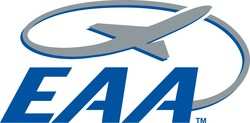Letter Groups Applaud The Committee's Formation
The FAA has formed an aviation rulemaking committee to provide
recommendations to further the development and deployment of an
unleaded avgas with the least impact on the existing piston-engine
aircraft fleet. The Unleaded Avgas Transition Aviation Rulemaking
Committee (UAT-ARC) will be a collaborative industry-government
task force that will bring together key stakeholders representing
aircraft and engine manufacturers, fuel producers and distributors,
operator groups, aviation associations, the FAA and the EPA to
develop a comprehensive avgas program.

"The FAA has an essential role to play in assessing and
approving any potential replacement unleaded fuel," said Pete
Bunce, GAMA's president and CEO. "The formation of this group is a
critically important step in moving forward with identifying and
prioritizing specific tasks necessary to resolve the issues related
to the transition to an unleaded avgas for our industry and finding
the best solution for the piston aviation community. We applaud
Administrator Babbitt and his leadership team for this
initiative."

"Last fall, the GA Avgas Coalition called on the FAA to take a
leadership role in the industry efforts to develop and deploy an
unleaded avgas," said Bunce. "The formation of the UAT-ARC shows
that the FAA is stepping up in this role and should give owners and
operators added confidence that the industry is on the right path
to a solution."
GAMA members that manufacture airplanes and piston engines will
serve key roles on the UAT-ARC and provide valuable recommendations
to address issues regarding the assessment and qualification of
potentially viable replacement fuels and the transition to an
unleaded avgas.

“This is a much needed step in the process that will
ultimately determine how the aviation industry reaches an unleaded
fuel solution,” said Rob Hackman, AOPA vice president of
regulatory affairs and liaison to the GA Avgas Coalition.
“While the move toward an unleaded aviation fuel has been
spurred by an Environmental Protection Agency action, it is the FAA
that must approve new fuels, ensuring they provide adequate safety.
Essentially, while the EPA can regulate what comes out of the tail
pipe, the FAA has to regulate what goes in the fill
pipe.”

“This is a significant step in the process toward an
unleaded future for general aviation,” said Doug Macnair, EAA
vice president of government relations. “We have consistently
urged that all concerned parties needed to come together in a
coordinated fashion under a federal umbrella including both the FAA
and the Environmental Protection Agency, who have a shared role in
regulating aircraft emissions, fuel, and safety. Twenty years of
work has shown us that no single entity can solve the high-octane
unleaded avgas issue in a vacuum.”

This action responds to recommendations of the General Aviation
(GA) Avgas Coalition which includes the Aircraft Owners and Pilots
Association (AOPA), the American Petroleum Institute (API), the
Experimental Aircraft Association (EAA), the General Aviation
Manufacturers Association (GAMA), the National Air Transportation
Association (NATA), the National Business Aviation Association
(NBAA), and the National Petrochemical and Refiners Association
(NPRA).
 Aero-News: Quote of the Day (04.28.25)
Aero-News: Quote of the Day (04.28.25) ANN's Daily Aero-Term (04.28.25): Decision Altitude (DA)
ANN's Daily Aero-Term (04.28.25): Decision Altitude (DA) ANN's Daily Aero-Linx (04.28.25)
ANN's Daily Aero-Linx (04.28.25) Airborne-Flight Training 04.24.25: GA Refocused, Seminole/Epic, WestJet v TFWP
Airborne-Flight Training 04.24.25: GA Refocused, Seminole/Epic, WestJet v TFWP Aero-News: Quote of the Day (04.29.25)
Aero-News: Quote of the Day (04.29.25)







